
views
Writing a Letter to Someone in Jail

Visit the jail website. Jails house inmates who are awaiting trial or who are serving a sentence of no more than one year. Prisons house inmates serving a term of more than one year. If the person you wish to communicate with is currently in jail, visit the website of the jail. Jail websites often have helpful information and resources, including the jail's physical address, an inmate database, and the jail's mail policy. If you are not sure where the person you want to contact is incarcerated, use the jail's online inmate database, or telephone the jail with your questions.

Look up the inmate's booking number. Some jails require you to include the inmate's name and booking number with the address on the envelope. Locate the inmate's booking number by using the inmate database, or call the jail and request the inmate's booking number for the purpose of sending a piece of mail to the jail.
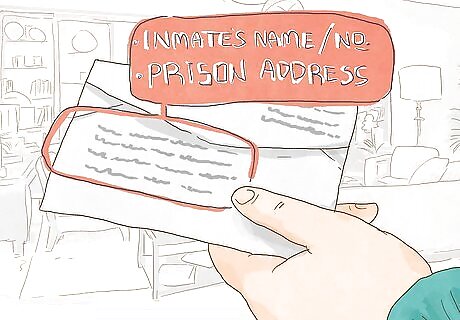
Address the envelope. On the outside of the envelope, write the address in the center. On the first line, write the inmate's name and booking number. On the second line, write the physical address of the jail, or the P.O. box where the jail accepts inmate mail. On the third line, write the city, state, and zip code.
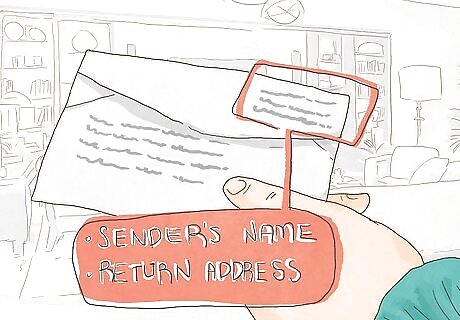
Include your name and return address. In the top right corner of the outside of the envelope, write your name and return address. On the first line, write your first and last name. On the second line, write your street address. On the third line, write your city, state, and zip code. Leave the rest of the envelope clean. Some jails specifically prohibit stickers on envelopes because they can conceal contraband. Other jails will not accept an envelope that has a stain or that smells of perfume, cologne, or some other substance.

Make sure not to send confidential information. All incoming and outgoing mail to and from the jail is typically subject to search. Do not send information that you would not want the jail staff to read. This includes information related to the inmate's' legal representation, since the mail is not privileged or confidential. Most topics are acceptable, so write about anything you want. If you want to write a letter of a romantic or sexual nature, you can, as long as you are comfortable with jail officials reading it as well. Refrain from writing about illegal activities or ongoing investigations related to the inmate's case. These topics could get your letter withheld or get the inmate in trouble.

Avoid sending prohibited items. Jails have a list of items that will not be accepted through the mail. These rules are intended to maintain safety in the jail. Commonly prohibited items include: Greeting cards; Food and candy; Items with crayon, gel-ink, glue, or white-out; Cash and checks; Sexually suggestive or gang-related pictures; and Hardback and leather-bound books.

Mail your envelope. Send your envelope as your normally would, whether by depositing it in the mail or taking it to the post office. Do not use a courier or delivery service, as your delivery may be refused. Be sure to include the proper amount of postage for the weight of the envelope.

Send an email. The jail website may contain an inmate database and instructions for sending email to an inmate, if the jail offers that service. Using the service may be as simple as locating the inmate's name within the database and clicking on an email icon. Although you can send an email to an inmate, the inmate will not typically receive the email in an electronic form, unless the jail provides computer and internet access to inmates. Instead, jail staff will print the message, read it, and deliver it to the inmate, usually on the next day. The inmate will not be able to email you back; he or she must respond with a letter of his or her own. Observe any rules about email. For example, you may be asked to limit your correspondence to two messages per day. The messages often must be no more than a single page in length and contain no attachments or pictures.
Writing a Letter to Someone in Prison

Visit the prison website. If the person you wish to communicate with is in prison, visit the prison's website to find the address where the prison accepts inmate mail, an inmate database, and the prison's mail policy. Prison systems are run by the state, not the county, so in searching for the prison website, you might search for the state's Department of Corrections, before navigating to the specific regional facility where the inmate lives.
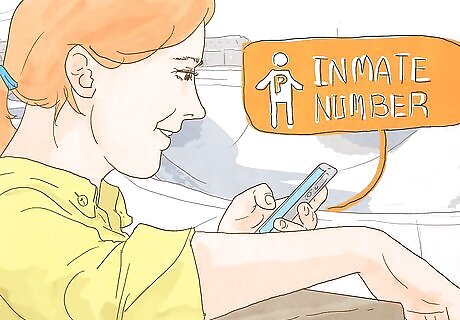
Look up the inmate's number. Some prisons require you to include the inmate's name and number with the address on the envelope. Locate the inmate's number by using the inmate database, or call the prison and request the inmate's number number for the purpose of sending a piece of mail to the prison. In Arizona, for example, an inmate's number is called the "ADC" number, for "Arizona Department of Corrections."
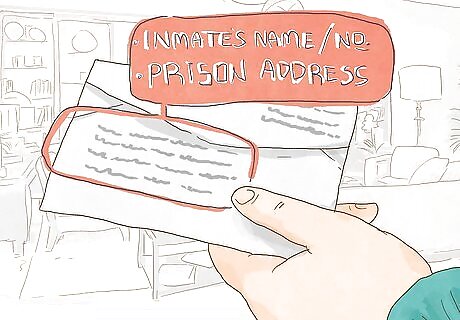
Address the envelope. On the outside of the envelope, write the address in the center. On the first line, write the inmate's name and number. On the second line, write the physical address of the prison, or the P.O. box where the prison accepts inmate mail. On the third line, write the city, state, and zip code.
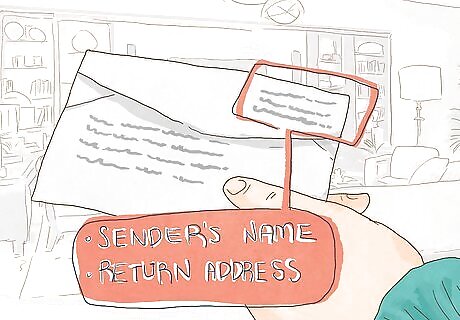
Include your name and return address. In the top right corner of the outside of the envelope, write your name and return address. On the first line, write your first and last name. On the second line, write your street address. On the third line, write your city, state, and zip code. Leave the rest of the envelope clean. Some prisons specifically prohibit stickers on envelopes because they can conceal contraband. Other prisons will not accept an envelope that smells of perfume, cologne, or some other substance.

Make sure not to send confidential information. All incoming and outgoing mail to and from the prison is typically subject to being opened and read. Do not send information that you would not want the prison staff to read. This includes information related to the inmate's legal representation, since the mail is not privileged or confidential. Most topics are acceptable, so write about anything you want. If you want to write a letter of a romantic or sexual nature, you can, as long as you are comfortable with prison officials reading it as well. Refrain from writing about illegal activities or ongoing investigations related to the inmate's case. These topics could get your letter withheld or get the inmate in trouble.

Avoid sending prohibited items. Prisons have a list of items that will not be accepted through the mail. These rules are intended to maintain safety in the prison. Commonly prohibited items include: Food and candy; Cash and checks; and Sexually suggestive or gang-related pictures and books.

Mail your envelope. Send your envelope as your normally would, whether by depositing it in the mail or taking it to the post office. Before sending a package through a courier or delivery service, verify that the prison will accept deliveries other than through the regular U.S. Post Office.
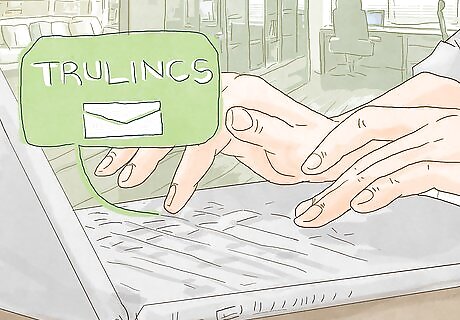
Send an email. The Federal Bureau of Prisons operates a program called TRULINCS, which provides email access to inmates through a program called CorrLinks. Once you give your email address to an inmate, the inmate can place you on his or her contact list, which is reviewed and approved by prison staff. Wait for an authorization email from CorrLinks. Once your are approved on the inmate's contact list, you will receive a message from CorrLinks. The message will ask you if you want to accept or block future messages from the inmate. Indicate that you wish to keep accepting messages. You will then be able exchange emails with the inmate.
Finding a Pen Pal

Use an online service. There are many websites dedicated to matching inmates with pen pals on the outside. These sites typical feature profiles written and posted by inmates who are searching for friendship, romantic companionship, or legal advice. You can find inmates looking for pen pals at these sites (and many others): https://www.writeaprisoner.com https://www.friendsbeyondthewall.com https://www.convictpenpals.com
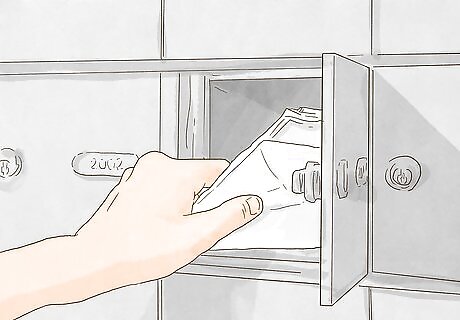
Set up a PO Box. Reserve a post office box at your local post office and use the box instead of your return address. When writing to someone new, it could be unsafe to give that person your home address. By using a PO Box, you can keep your home address confidential while sending and receiving mail from your new pen pal.

Consider sending a greeting card first. A greeting card can be a friendly way to establish contact without having to compose a long, personal introduction. You might even send a birthday card to an inmate who has a birthday coming up. Include a brief note introducing yourself and stating that you are looking for a pen pal. Invite the recipient to correspond with you by writing to you at your PO Box address.













Comments
0 comment